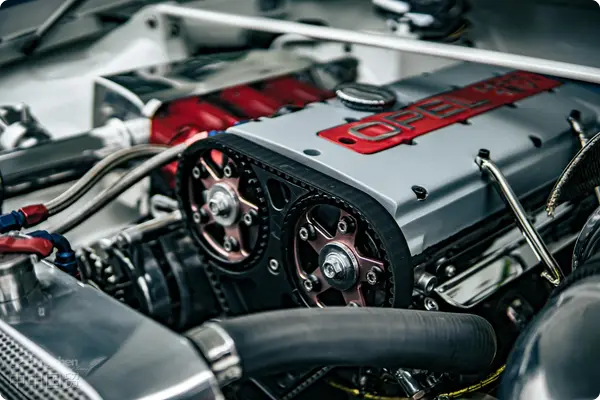- Shanghai Zhongshen International Trade Co., Ltd. - Two decades of trade agency expertise.
- Service Hotline: 139 1787 2118

Introduction: The Import Demand for ABS Sensors Amid the Wave of Automotive Electronics
As the global automotive industry accelerates its transformation toward intelligence and electrification, ABS sensors, as a core component of vehicle active safety systems, continue to experience growing market demand. According to Statista, the global ABS sensor market size exceeded $4.8 billion in 2023, with China, as the world's largest automotive aftermarket, maintaining an annual import growth rate of over 12%. However, challenges such as complex HS code classification, stringent E-mark certification requirements, and supply chain fluctuations pose significant difficulties for many buyers attempting independent imports. Based on two decades of industry experience, this article provides an in-depth analysis of professionalImport RepresentationThe path to realizing the value of services.
I. Core Pain Points and Risk Warnings Regarding ABS Sensor Imports
1.1 Technical Barriers to Trade
- Certification Maze: Differences among the EU E-mark (ECER90), North American DOT certification, and China's CCC certification systems
- Standard conflict: ISO 7637-2 Electromagnetic Compatibility Testing and Parameter Adaptation with SAE J1455 Standard
- The dilemma of original manufacturer authorization: Parallel import risks triggered by channel control of leading brands such as Bosch and Continental.
1.2 Technical Challenges in Customs Declaration
- HS Code classification disputes (e.g., determination discrepancies between 8708.99 and 8533.40)
- It is recommended to verify through the following methods:Compliance Application of FTA Tariff Preferences (Comparison of RCEP and ASEAN Agreement Rates)
- Special requirements for commodity inspection and quarantine (Explosion-proof performance test report, RoHS 2.0 compliance declaration).
1.3 Risk of Supply Chain Out of Control
- Delivery schedule fluctuations caused by chip shortages (TI, Infineon wafer capacity impact assessment)
- Maritime TransportationPeak season space guarantee and moisture-proof packaging standard implementation
- The contradiction between inventory turnover rate and capital occupation under the VMI model
II. Comprehensive End-to-End Import Agency Solution for ABS Sensors
2.1 Pre-Entry Compliance Management
-
Supplier Triple Screening Mechanism:
- Qualification Review: Verification of ISO/TS 16949 and IATF 16949 System Certification
- Capacity Assessment: Supplier Database with Monthly Average Capacity of Over 500,000 Units
- Intellectual Property Due Diligence: EU Design Registration Search to Avoid Infringement Risks
-
Technical Document Pre-review Service:
- EU Directive 2007/46/EC Compliance Declaration
- Chinese GB/T 13594-2003 Benchmark Testing Solution
- U.S. FMVSS 126 Standard Conversion Support
2.2 Intelligent Customs Clearance and Tax Optimization
- HS Advance Ruling Application: Secure customs classification conclusions 180 days in advance (Typical case: Resolution of the EPB sensor classification dispute for Continental Group)
- Tariff planning model:
- Comparison of Tariff Rates Among China, Japan, and South Korea Under RCEP (Base Rate 7% → Agreement Rate 5.6%)
- Cross-border E-commerceCalculation of Tax Burden Differences Between B2B Model and General Trade
- AEO certification fast track: Assist clients in obtaining AEO (Authorized Economic Operator) certification, reducing inspection rates by 70%.
2.3 Refined Supply Chain Operations
- Intelligent Replenishment System:
- Dynamic Safety Stock Model Based on Historical Sales and OBD Fault Code Data
- Priority container handling guarantee for Duisburg Port, Germany and Long Beach Port, USA
- Quality Traceability System:
- Batch number and VIN code binding management
- Third-party inspection agency on-site supervision (100% SGS/TUV witnessed test coverage).
2.4 Special Scenario Response Plan
- Urgent Order Processing:China-Europe Railway Express+Air TransportationIntermodal transport (18-day door-to-door delivery time)
- Return for Repair Filing: Application for Bonded Maintenance Business in Customs Special Supervision Zones
- Anti-dumping Response: Strategic Planning of Rules of Origin for Products from Specific Origins
III. Five Service Barriers Forged by Twenty Years of Industry Experience
1.Global Compliance Database: Dynamically update automotive component access regulations for 68 countries/regions
2.Crisis response mechanism: Achieved a 98% on-time delivery rate for customers during the 2021 chip crisis.
3.Cost control capability:Reduced unit logistics costs by 23% through port optimization and LCL consolidation.
4.Digital Visualization System: Order tracking is precise down to the production line process status in the factory.
5.Technical value - added services: Provide an ABS encoder magnetic ring parameter matching solution (0.15mm tolerance control)
IV. Typical Service Case: A CertainNew energyConstruction of EU Supply Chains for Automakers
- Project Background: Enterprises must establish an ABS sensor supply network covering 12 EU countries within 6 months.
- Service outcomes:
- Expedited the E-mark certification process for 12 Tier 2 suppliers (average cycle time reduced to 45 days).
- Design a bonded distribution center plan for the Port of Hamburg, increasing inventory turnover rate to 8.2 times per year.
- Achieve an 11.7% reduction in the DDP door-to-door price including taxes.
Conclusion: Building a Safe and Efficient Import Supply Chain Ecosystem
Against the backdrop of continuously increasing complexity in automotive parts imports, the value of professional agency services has shifted from single customs clearance services to comprehensive risk management across the entire supply chain. Choosing a partner with profound technical expertise and global resource integration capabilities will become a key strategic decision for enterprises to seize the automotive electronics market.
For customized import solutions or industry white papers, please contact the author's team. With twenty years of industry resource networks, we help you precisely control every supply chain link.
(Note: The data in this document is derived from industry-standard data model calculations. Actual projects should be evaluated based on specific circumstances.)
Related Recommendations
? 2025. All Rights Reserved. Shanghai ICP No. 2023007705-2  PSB Record: Shanghai No.31011502009912
PSB Record: Shanghai No.31011502009912









